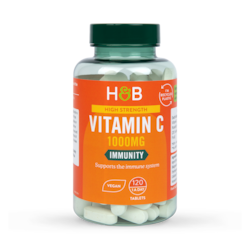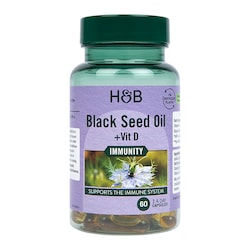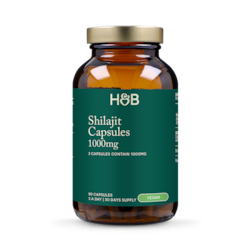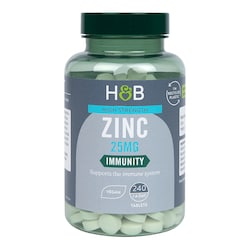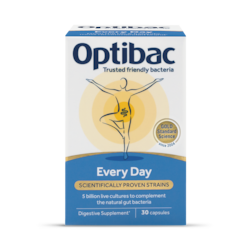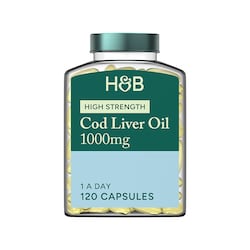20% off £30
FAQs about common colds
.png)
Catching a cold can be draining. It can zap your energy and make you feel lethargic, which can obviously get in the way of your everyday life.
A sore throat, blocked nose, coughing and sneezing can often feel like a cold can last forever. Still, it's thought that you can begin to feel better in around one to two weeks.
In this article, we’ll go through the early symptoms of a cold, how you can expect to feel at different times throughout the virus and how you can treat it effectively, without spreading it.
What is a cold?
A cold, or common cold is a mild viral infection that effects the nose, throat, sinuses and upper airways in both adults and children.1
The most common symptoms include:2
- Coughing
- Blocked or runny nose
- Sore throat
- Sneezing
In more severe circumstances you may feel a high temperature, aching muscles and headaches. However, these symptoms are generally more associated with flu.
Summary
- A cold is a minor viral infection that effects the nose, throat, sinuses and upper airways in both adults and children
How long does a cold last?
In most cases, you can treat a cold without seeing a GP within a week or two.3 Children may take a little longer to recover in some cases.
If your symptoms worsen and you have breathing difficulties, it’s thought you should consult your GP.
Summary
- A cold can last for one to two weeks
- Children or the elderly can take a little longer to recover in some cases
How long does a head cold last?
The common cold will last around seven to ten days. While there is no strict rule on headaches during the cold cycle (see below) it is thought that congestion will usually occur in the first 1-3 days before it begins to subside.
How long does a runny nose last?
As above, there is no specific time as we all deal with a cold differently. However, it's thought that you might feel more nasal on days 3 and 4 as your body works the virus out of your system.
Life cycle of a cold
Your cold should last around one to two weeks, but you’ll notice different symptoms throughout that cycle. It is thought that you’ll experience a five stage pattern that will indicate where you are in the cycle and can indicate where you are in terms of recovery.
The timeline of a cold
Are you showing signs of a cold and keen to know what’s coming? Or have you been battling a cold for a while and are desperate to know if the end is in sight?
Our timeline of symptoms should help.
Day 0
It’s unlikely at this stage that you’ll feel any particular symptoms at this stage.
However, if you are stressed you may be more susceptible to catching bugs as stress can disrupt your immune system and make it less efficient.
Excess stress also decreases the white blood cells in your body, which are needed in abundance for fighting off viruses such as the common cold.4
Days 1 and 2
Colds can begin with a few different symptoms, but the most common symptoms in the early days indicate that the virus is directly affecting your respiratory system congestion, e.g. a runny nose, and sore throat.
In this first stage, it’s especially important to rest as much as possible to minimize fatigue and allow your immune system to work to its full capacity.5
Days 3 and 4
During the third and fourth day, you’re likely to be in the peak of the virus.6
It’s likely that you’ll feel very nasal. You might notice that the mucus from your nose has become thicker, possibly even yellow, or green in colour. This is usually down to a spike in the number of white blood cells your immune system has produced in order to overcome the virus.
As you begin to feel better, the discharge will begin to clear up. However, at this stage you may develop a cough in response.7
Days 5 to 7
It’s possible that you might be feeling low during days 5 – 7. This is a normal side-effect of feeling under the weather physically. Try to go easy on yourself during this time and reschedule and postpone anything you can while you focus on resting and getting better
You shouldn’t however feel unable to leave your bed at all. If this is the case, you might have ‘flu’.
You’re highly contagious during this time, as you’re probably expelling droplets via sneezing and coughing. Be sure to bin used tissues, and of course, wash your hands frequently.
Days 8 – 10
By this time, you might be over the worst but you’re likely to still feel tired, achy and your sore throat and congestion are probably still there – at least less severe.
A cough might be the last symptom to disappear, and you might be stuck with a cough for a few days after your other symptoms have ended.
Any lingering symptoms such as sneezing mean you could still be contagious during this time.
You might feel up to spending time in the kitchen, so make some healthy choices to get your strength back.
If your cough persists
A fever is your body’s way of fighting off a virus, so don’t worry if you have a slight temperature. However, if your fever goes above 38 or 39 degrees centigrade it could be a sign of another condition.
The NHS states that you should consult your doctor when:8
- You're concerned about your child's symptoms
- Your symptoms don’t improve after three weeks
- Your symptoms suddenly worsen
- If you feel hot and shivery with a very high temperature
- You're feeling short of breath or develop chest pain
- you have a long-term medical condition – for example, diabetes, or a heart, lung or kidney condition
- you have a weakened immune system – for example, because you're having chemotherapy
Summary
- Colds can begin with several symptoms, and while there are no set rules it’s often thought you will begin with a head cold, moving on to a sore throat before you begin on the road to recovery
How do you make a cold go away faster?
The NHS offers four pieces of advice to help recover from a cold as quickly as possible, they include:9
Four ways to treat a cold:
- Rest and sleep: This will allow the body time to recover
- Keep warm: It's important to maintain temperature
- Drink plenty of water: Fruit juice or squash with water are both ideal to avoid dehydration
- Adults can gargle salt water to soothe a sore throat, however this is not suitable for children.
You can also see our 5 ways to help with your cold article on the health hub, which will give you more detailed information.
Summary
- In order to treat your cold, it's important to get rest to allow your body to recover
- You must also stay warm and hydrated in order to treat the cold the best way you can
How long does it take to catch a cold?
The cold is an infectious virus which can easily be spread between people from a few days before their symptoms begin right up until symptoms have finished, which is around 1 to 2 weeks.
Colds are spread by germs which come from your coughs and sneezes, which can live on your hands and surfaces for 24 hours.10
To avoid catching a cold, you should:
- Wash your hands regularly with soap and warm water
- You can avoid contracting the virus by not sharing towels, cups or any household items that may come into direct contact with somebody carrying the virus
- Looking after your health and wellbeing - being active and keeping a healthy diet
Why is my cold lasting so long?
If your cold lasts longer than three weeks, it may be that your cold has progressed to something more serious and you should consider consulting your doctor.
It might also be a good idea to get advice from a GP if you're concerned about your baby or an elderly person, or if you have a long-term illness such as a lung condition.
You can phone NHS's 111 service for advice.
The common cold summary
The common cold will typically clear up in around one to two weeks. Children and elder adults may take a little longer to recover.
There’s no specific cure for the cold, so it's generally more about prevention. This can be done by resting, making sure you get enough fluids and generally looking after yourself.
Your cold should not last longer than three weeks. If after that time you are still feeling no better, then you should consult your GP.
FAQs about common colds
Most of us come down with cold or flu viruses at some point during the year. You have the tell-tale symptoms: sore throat, cough, runny nose.
But what exactly is happening in your body when you’re hit with a cold or flu virus? And how should you treat it?
What are colds and flu?
Colds and flu are both upper respiratory infections affecting your nose, throat and lungs – they’re just caused by different viruses.11
There are over 200 types of viruses that can cause common cold symptoms with around 50% being rhinoviruses,12 while the flu is caused by the influenza virus.13
Colds are the most common respiratory virus: children can get eight or more a year,14 and by the time you’re an adult, you still get two to three.15
How can you tell the difference between a cold and flu?
We all know people who say they’ve got the flu when it’s probably just a cold – but sometimes it can be hard to tell what you’ve got.
As a rough guide, cold symptoms:
- come on gradually
- affect just your nose and throat
- you can still go to work and school, though you’ll still feel unwell16
Flu symptoms:
- more severe
- come on more suddenly, within a few hours
- affect more than just your nose and throat, for example giving you a fever, aching muscles, headache and chills
- more likely to make you feel so unwell and exhausted that you can’t get on with daily life17
How do you catch a cold or flu?
Either through the air – the viruses travel in droplets when an infected person coughs, sneezes or speaks – or from picking them up from a hard surface, such as a door handle, and transferring them to your nose, mouth or eyes.18
Cold symptoms develop 1-3 days after exposure; for flu symptoms, it’s 1-4 days.19
What are the symptoms?
Those tell-tale symptoms aren’t caused by the virus – but by your own immune system’s defence mechanisms.
For example, white blood cells called T-cell lymphocytes attack the flu virus in your lungs, causing a build-up of mucus and difficulty breathing.20
For colds, symptoms include:
- blocked or runny nose
- sore throat
- coughing
- headaches
- sneezing
- loss of your senses of smell and taste
- muscle aches21
And flu symptoms include:
- sudden fever, with a temperature of 38°C or higher
- fatigue
- headache
- muscle aches
- sore throat
- loss of appetite
- trouble sleeping
- dry cough22
Who gets the most colds and flu?
For colds, definitely children – they can get more than eight colds a year.23
Adults have 2-3 a year.24
When it comes to flu, over-65s and children are most likely to contract an infection.25
Certain factors increase your risk of picking up a bug:
- being in a big group of people – for example, at school or a concert
- smoking
- a weakened immune system
- the season – you’re more likely to catch a cold in autumn and winter26
Can you prevent colds and flu?
Both cold and flu viruses can be infectious one day before someone shows symptoms – so avoiding people who are obviously coughing and spluttering isn’t enough.27
Try these tips:
- Wash your hands regularly with soap and warm water
- Avoid touching your face too much – that way you don’t transfer bugs to your nose or eyes
- Don’t share items such as towels, cups and cutlery
- Stay fit and healthy, with plenty of sleep and a balanced diet – this will help you fight off any viruses you come into contact with.28
- Try echinacea – a 2014 Cochrane review found that the herb could help support your body in preventing colds29
- get the NHS flu vaccine
Treating colds and flu
If you’re ill with a cold or flu, get plenty of rest, drink lots of fluids, stay warm and eat a healthy diet.30,31
Last updated: 28 September 2021
- https://www.nhsinform.scot/illnesses-and-conditions/infections-and-poisoning/common-cold
- https://www.nhsinform.scot/illnesses-and-conditions/infections-and-poisoning/common-cold
- https://www.nhs.uk/conditions/common-cold/
- https://www.nhs.uk/conditions/common-cold/
- https://www.nhs.uk/conditions/common-cold/
- https://www.verywellmind.com/common-symptoms-of-too-much-stress-3145238
- https://www.everydayhealth.com/cold-flu/treatment/your-day-to-day-guide-to-the-common-cold/
- https://www.medicalnewstoday.com/articles/327348#babies-and-toddlers
- https://www.nhs.uk/conditions/common-cold/
- https://www.nhs.uk/conditions/common-cold/
- https://www.nhs.uk/conditions/common-cold/
- Centers for Disease Control and Prevention. Cold Versus Flu
- Medical News Today. All about the common cold
- Centers for Disease Control and Prevention. Influenza (Flu) Viruses
- NHS. Colds, coughs and ear infections in children
- Centers for Disease Control and Prevention. Common Colds: Protect Yourself and Others
- NHS. Common Cold
- NHS. Common Cold
- Mayo Clinic. Influenza
- NHS. Flu
- NHS. Coughs, colds and ear infections in children
- Allan GM, Arroll B. Prevention and treatment of the common cold: making sense of the evidence
- Mayo Clinic. Influenza
- Mayo Clinic. Common Cold
- MedicineNet. How long is a cold or flu contagious
- NHS. Common Cold
- Martineau A, et al. Vitamin D supplementation to prevent acute respiratory tract infections: systematic review and meta-analysis of individual participant data
- NHS. Common Cold
- Science M, et al. Zinc for the treatment of the common cold: a systematic review and meta-analysis of randomized controlled trials
- Casanova V, et al. Antiviral therapeutic approaches for human rhinovirus infections
- NHS. Common Cold




